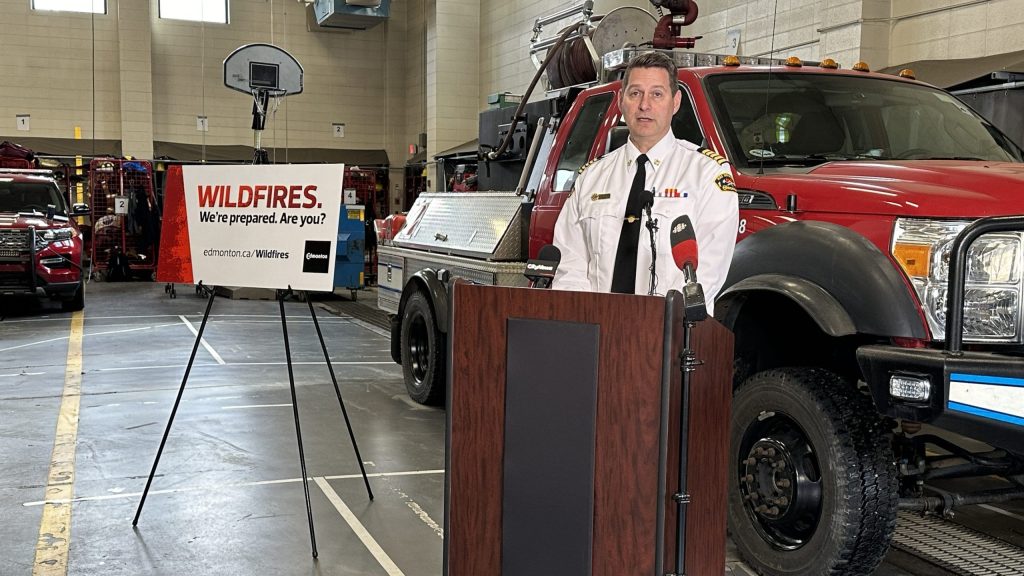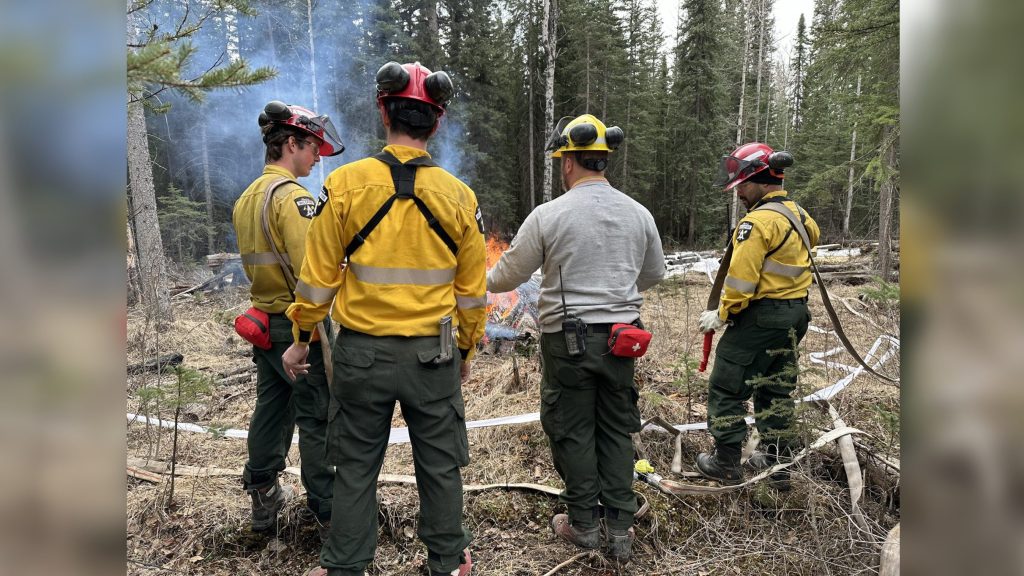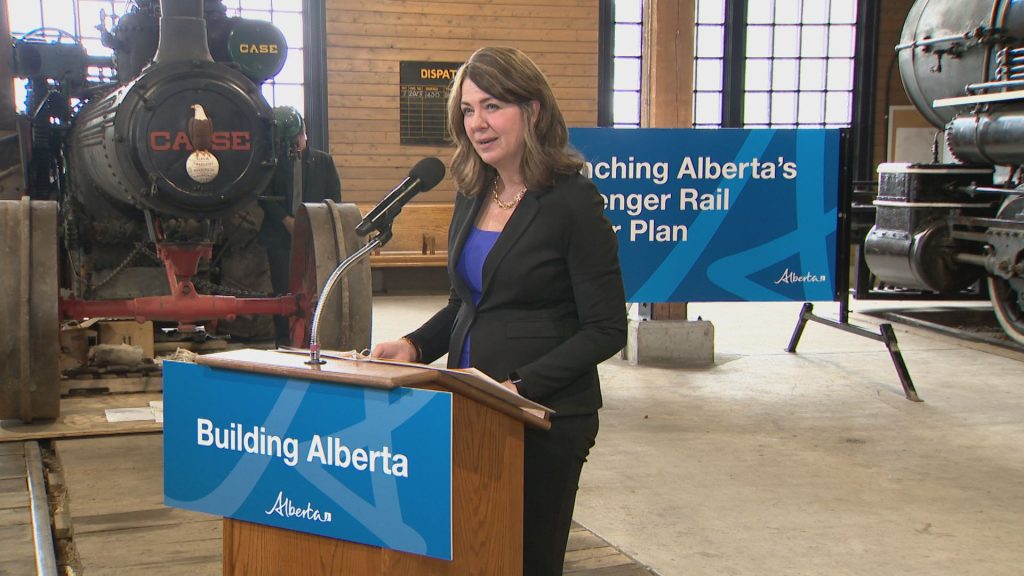City is prepared for wildfire threat, but Edmontonians should be too: fire chief
Posted April 16, 2024 1:31 pm.
Last Updated April 16, 2024 9:55 pm.
Being properly prepared for what’s expected to be another challenging wildfire season in Alberta must be a collaborative effort between officials and Edmontonians.
That was the message from Edmonton’s fire chief Tuesday, who reiterated the city is prepared for the increased fire risk while urging residents to do their part.
BACKGROUND: Drought, heat raise risk of repeat of last summer’s record-breaking wildfires
Persistent drought and months of above-average temperatures have raised the risk of a repeat of last year’s record-breaking wildfires.
Edmonton Fire Rescue Services Chief Joe Zatylny says the city has “procedures in place” to always “remain at the ready.” Officials are constantly monitoring wildfire activity and conditions as they determine if fire advisories or bans are needed, he says.

So far this year, there have been 145 grass or wildfires within city limits.
“Resources are ready and placed across the city in strategic places to ensure that we can respond to the risks, which include the wildfire potential of the river valley,” he said.
Zatylny called the river valley, the largest urban park in North America, at high risk. He says it’s being monitored with drones, and there’s a partnership in place with the University of Alberta to monitor hazards.
Part of being ready for any eventuality means having the proper training.
“Our crews have been provided with wildfire refresher training, building on the operational experiences gained over the last few years, and as well, leadership has taken additional incident management courses to bolster an increased capacity around the emergency operation centre activations should there be a city-wide or large-scale evacuation,” Zatylny said.
What every-day Edmontonians can do
He adds Edmontonians must play a part in keeping their communities safe.
He explains any illegal use of fireworks, improper use of fire pits and the dangerous disposal of smoking materials can lead to accidental wildfires.
No fire bans or restrictions are currently in effect for the Edmonton area. A fire ban was issued for Leduc County last week.
Zatylny says small actions can have big repercussions. He recommends residents have a 72-hour emergency bag prepared at all times, for instance.
“There are times where we may need to evacuate communities and so the preparedness of certain neighborhoods or certain areas.
“We will try to give you as much advance notice as we can, but if it’s time to go, we need you to evacuate for your own safety and be prepared for that.”
Another recommendation is to clean yards from debris, because they are a fire risk.
“Something as simple as cleaning the leaves out of your gutters, ensuring your fire pit does meet regulations is part of it,” said the fire chief.
“If you have debris lined up against your fence, it can become a fuel load for a grass fire that is right outside your fence.”
WATCH: Alberta Wildfire amps up preparations for the 2024 wildfire season
He says City of Edmonton officials are preparing for the possibility of having to support evacuees from other communities, as the city did last year — some 12,000 evacuees from Alberta and N.W.T. temporarily called the capital home.
“And while we will continue to support our neighbours in a time of need in a heartbeat, and ensure that they have a safe place to come to, the fact remains that opening reception centres last summer required an incredible amount of resources,” Zatylny explained.
Alberta saw a total of 1,088 wildfires that burned about 22,000 square kilometres from March 1 to Oct. 31, 2023. The five-year average for area burned is 2,262 square kilometres.
The 2023 fire season was also Canada’s worst on record, burning more than 15 million hectares and forcing more than 230,000 people from their homes.











